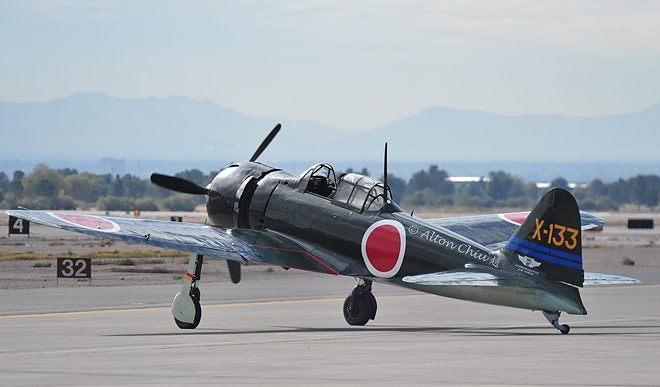Continuing the A6M3 armament article, this second half investigates the cockpit, wing, and engine.
Climbing Aboard
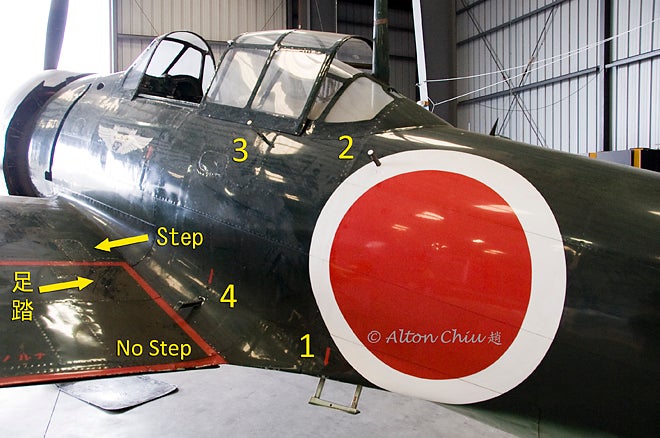
To reach the cockpit, one must board from the wing trailing edge. There are push buttons along the fuselage which eject spring loaded hand and footholds labeled 1 through 4 in the accompanying photograph. The pilot first put his foot on the rung labeled 1 while grabbing the handholds labeled 2 and 3 to hoist himself aboard. The foothold labeled 4 served to keep the weight off the split flap panel while traversing to the wing or to the foothold labeled 5 to climb into the cockpit. The red square on the wing is a no-step area while it is permissible to walk along the span on the rest of the wing. Interestingly, the characters denoting foothold (足踏) are in the no step area while CAF members use the plate just forward for a stepping stone.
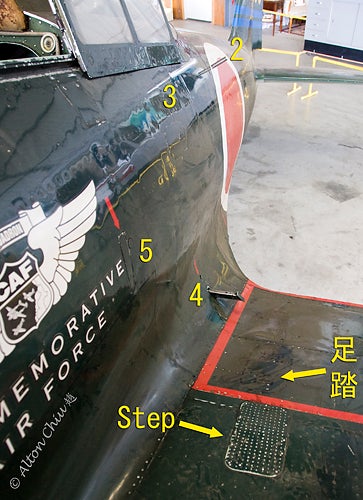
Cockpit Front
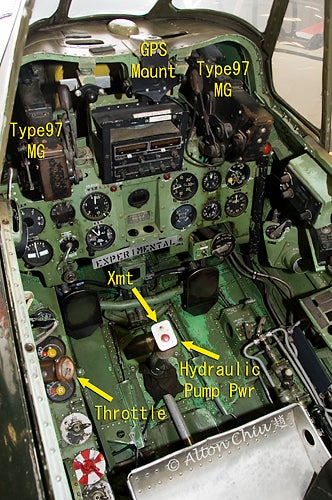
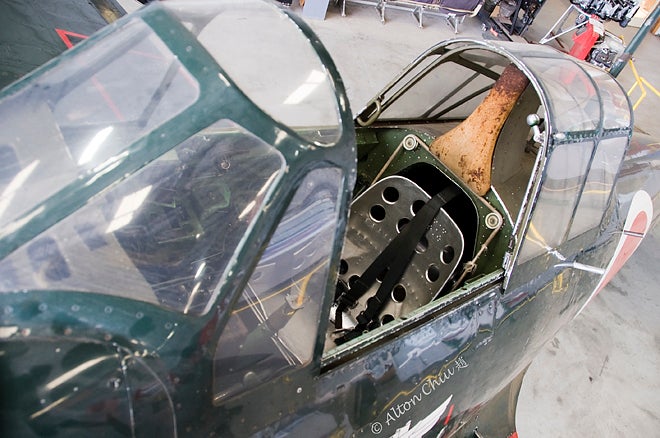
The cockpit is Spartan. The seat is just brushed aluminum and lightening holes are drilled everywhere. For better visibility on the ground, the pilot can pull up a handle on the right side like the emergency brake of a car to raise the seat. The scalloping of the headrest provides excellent rearward visibility. Unlike American fighters such as the P-51, the pilot is not protected by armor plate behind or armored glass in front until the A6M5 model.
The Zero instruments mount to the dash directly, in contrast to American designs where the instruments were afforded shock absorbers to save their bearings. The CAF aircraft has a modified stick where two buttons are located on top for radio transmissions and for powering the hydraulic pump. Historically, the Zero had no buttons on the stick.
Cockpit Side and Bottom
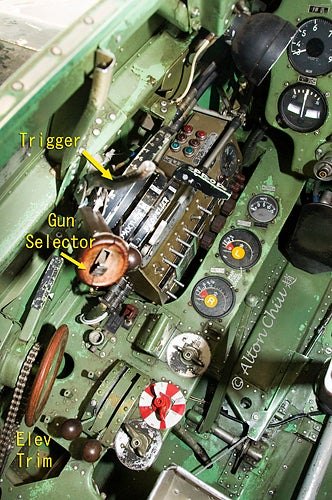
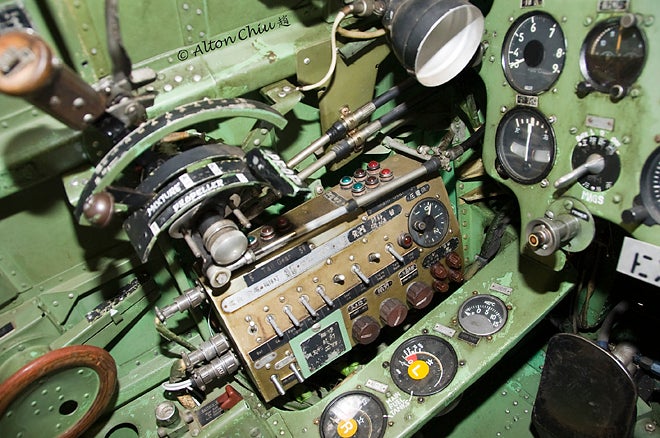
On the left is the throttle which features one of the few wood pieces visible on the aircraft. The bicycle brake handle mounted to the throttle fires the armament, while the switch at the tip of the throttle selects machinegun, cannon, or both for use. The propeller and mixture controls are also co-located with the throttle in the familiar fashion. The wheel with wood trim just aft of the throttle is the elevator trim wheel.
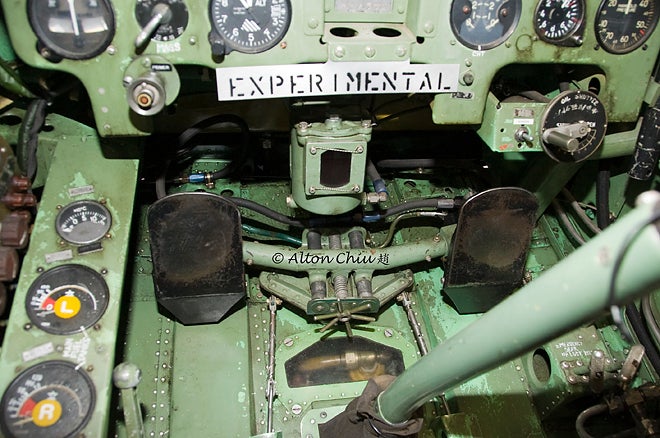
Moving to the bottom of the cockpit, one can see the see-saw type rudder pedal. Most modern aircraft, along with the P-51, features a rudder pedal that travels longitudinally only. The Zero utilizes a bar with hinged pedals that stayed “flat” to the pilot but does move laterally during travel. The original pedals featured a strap so that the pilot can push as well as pull for leverage, unlike the P-51 design. The window just aft of the rudder pedals allows visual confirmation of drop tank separation. The tanks would sometimes fail to separate upon release, and the window allowed the pilot to confirm whether some acrobatics were necessary to jostle the tank loose.
Control Surfaces
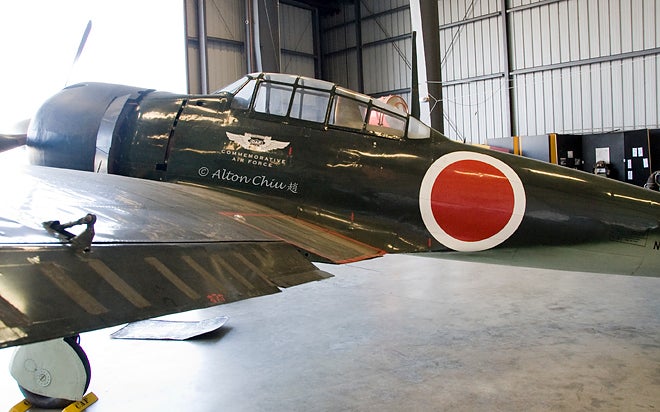
The Zero is famous for its low-speed maneuverability. Its low wing loading (124 kg/m2 vs. the 184 kg/m2 of the F6F) enables a high instantaneous turn rate, and the large aileron area promotes a rapid roll rate. The dope treated fabric control surfaces reduce balancing mass.
The large control surface area has two implications: that the control forces stiffen rapidly with airspeed, and that small control inputs result in large aircraft movement. While the former cannot be addressed without hydraulic boosted controls, the Zero designer had an ingenious solution for the latter problem. The control cables stretch by design so as to reduce control surface deflection at high speeds. Since moment due to deflection (∂L/∂δa, ∂M/∂δe, ∂N/∂δr) increases with airspeed, the stretching cabled somewhat decouples the moment per unit of pilot input from airspeed.
CAF pilots complement the easy handling characteristics of the Zero, and their experiences mirror that of wartime pilots. Saburo Sakai was able to fly home in the aircraft while drifting in and out of consciousness after sustaining a 30-caliber head injury. During later stages of the war, increasingly inexperienced pilots were still able to fly the aircraft. This contrasts with the P-51 which required constant pilot attention, especially when fully fueled where the center-of-gravity shifted aft and reduced the static stability margin.
Wing
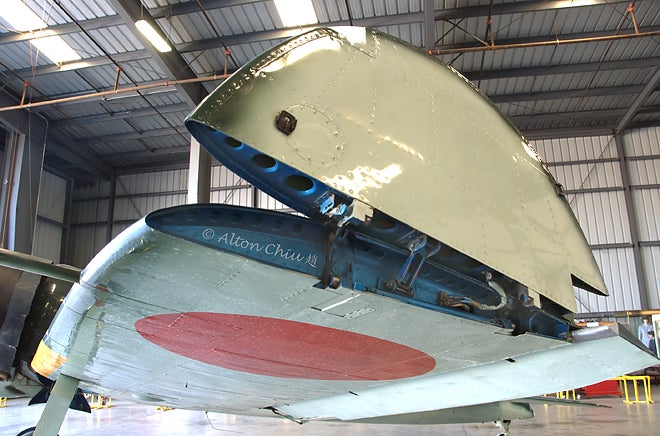
The wingtips fold to accommodate aircraft carrier elevators. The A6M3 Model 32 dispensed with the wing tips, but range suffered due to higher induced drag (CDi) from stronger wingtip vortices. The longer wingspan of the Model 22 reduced the severity of the vortices and restored range. Indeed, an infinite wing of 2D lift has no vortices at all.
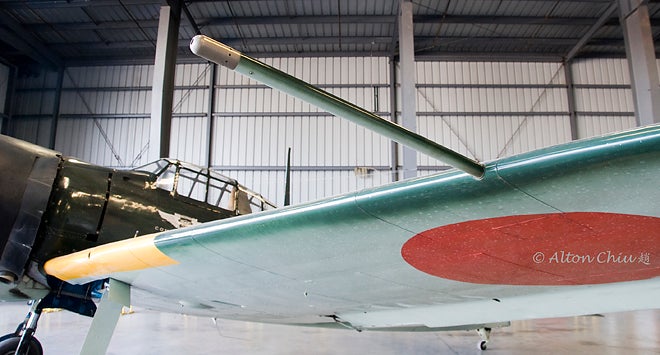
Pitot probe
The fuel tanks are positioned in the wing, inboard of the cannons, as an integral structural part. As the wing twists and bends, the spot welds inside are stress and develop leaks. The author observed streaks of fuel along the CAF Zero indicating such leaks despite the gentle handling by pilots. A CAF maintenance crewman mentioned seeing archival photos of Zeros with fuel streaks all along the underside. This indicated that wartime Zeros suffered these troubles as well.
Engine
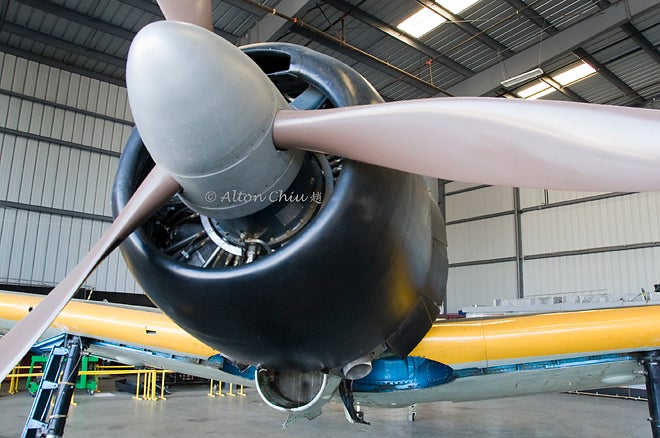
The original A6M3 utilized a 1130hp, two-row fourteen cylinders, Nakajima Sakae 21 coupled with a constant speed propeller. The CAF aircraft is currently powered by a 1200hp, two-row fourteen cylinders, Pratt & Whitney R1830. The Sakae 21 has 1.15m diameter, 1.6m length, and 28L displacement. The R1830 has 1.22m diameter, 1.5m length, and 30L displacement. The similarity maintained the original performance of the A6M3 while providing CAF with easy maintenance.
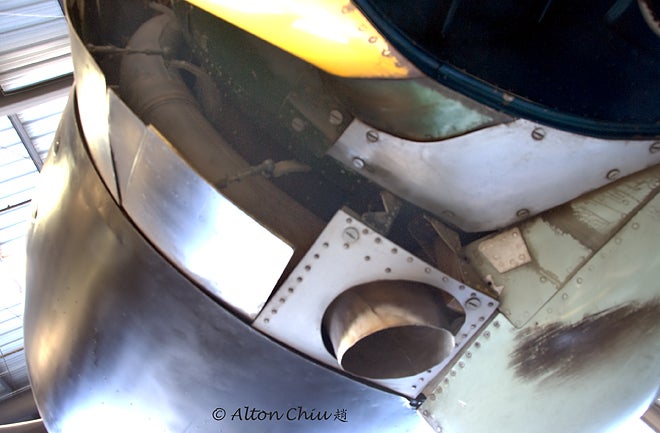
Both the Sakae 21 and R1830 share the same layout. The carburetor intake resides at the top of the cowling. The oil cooler rests at the bottom between the two exhaust stacks. Exhaust from the cylinders collect into a ring and funnel out the bottom. Later A6M5 models exchanged the collector ring for individual short stacks pointed aft for extra thrust.
The wartime Zeros and the one in CAF collection utilize a constant speed propeller. The pilot selects the desired revolution per minute (RPM) and the hydraulic closed-loop controller adjusts propeller blade pitch to match. This decouples the engine RPM from airspeed and allows the engine to operate at peak efficiency across the flight envelope. The constant speed propeller is analogous to the continuously variable transmission seen in vehicles today.
Concluding Thoughts
The Zero garnered a fearsome reputation due to its outstanding aeronautical design and is still a marvel to behold. Nakajima, the engine manufacturer, is still in business today as Fuji Heavy Industries making Subaru automobiles. Mitsubishi, the airframe manufacturer, is still in the defense business manufacturing F-15J amongst others. Even the landing gear manufacturer, Kayaba, is still in business as KYB. Automobile enthusiasts know the company for quality suspension components.
The Commemorative Air Force is a unique organization. Powered by none other than the love of aviation, the all-volunteer organization keeps these warbirds thundering across the skies. The Ghost Squadron in Camarillo is well worth a visit since the collection is flight worthy. (https://www.cafsocal.com/) Also of note is a flight worthy A6M5 at the nearby Planes of Fame museum in Chino. It features an original engine. (http://www.planesoffame.org/)
The author especially thanks Ricky and Jordan for their wealth of knowledge and patience.
 Your Privacy Choices
Your Privacy Choices
